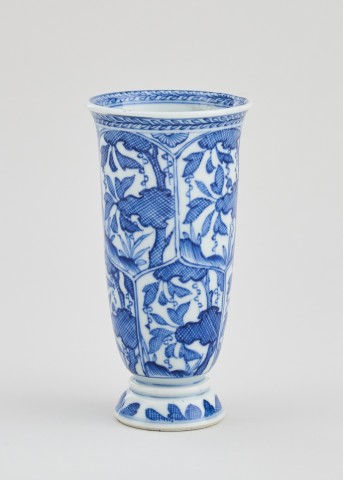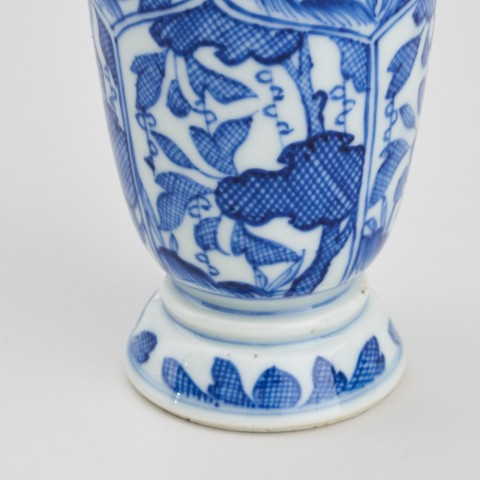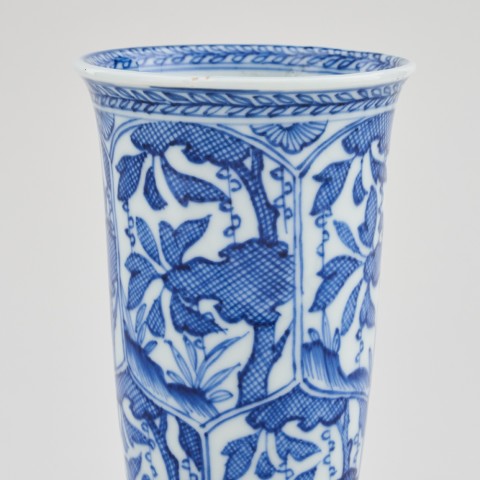L6
Further images
With a tall body, slightly everted rim and on a splayed, domed foot, painted in underglaze blue with two rows of four panels shaped as petals and decorated with leafy branches worked in hatching lines, the exterior and the interior rim with a thin leaf border, the base glazed.
Literature
A very similar example but with a cover is illustrated in Christiaan J.A. Jörg in collaboration with Jan van Campen,Chinese Ceramics in the Collection of the Rijksmuseum, Amsterdam, published by Phillip Wilson and the Rijksmuseum Amsterdam, London and Amsterdam, 1997, pl. 117, p. 116. Here Jörg discusses both the decoration of the hatching lines and the form of this type of beaker and we quote: "The painting in hatching lines is characteristic of a group of export wares of this period…The type was well represented in the cargo of the Vung Tao wreck (c. 1690). The style was short-lived, disappearing in the early 18th Century. The function of these beakers, which are still common in Dutch collections, is not yet clear. In the late 19th and the early 20th Century they were called 'cigar beakers', but this was obviously not their original use. As the covers may have served to keep the contents warm, it is suggested here that they could have been used for hot chocolate. Chocolate had become a fashionable drink by 1700 and, along with the tall, wide cups and covers in Japanese porcelain, these beakers might have been another version of a vessel for this drink.






